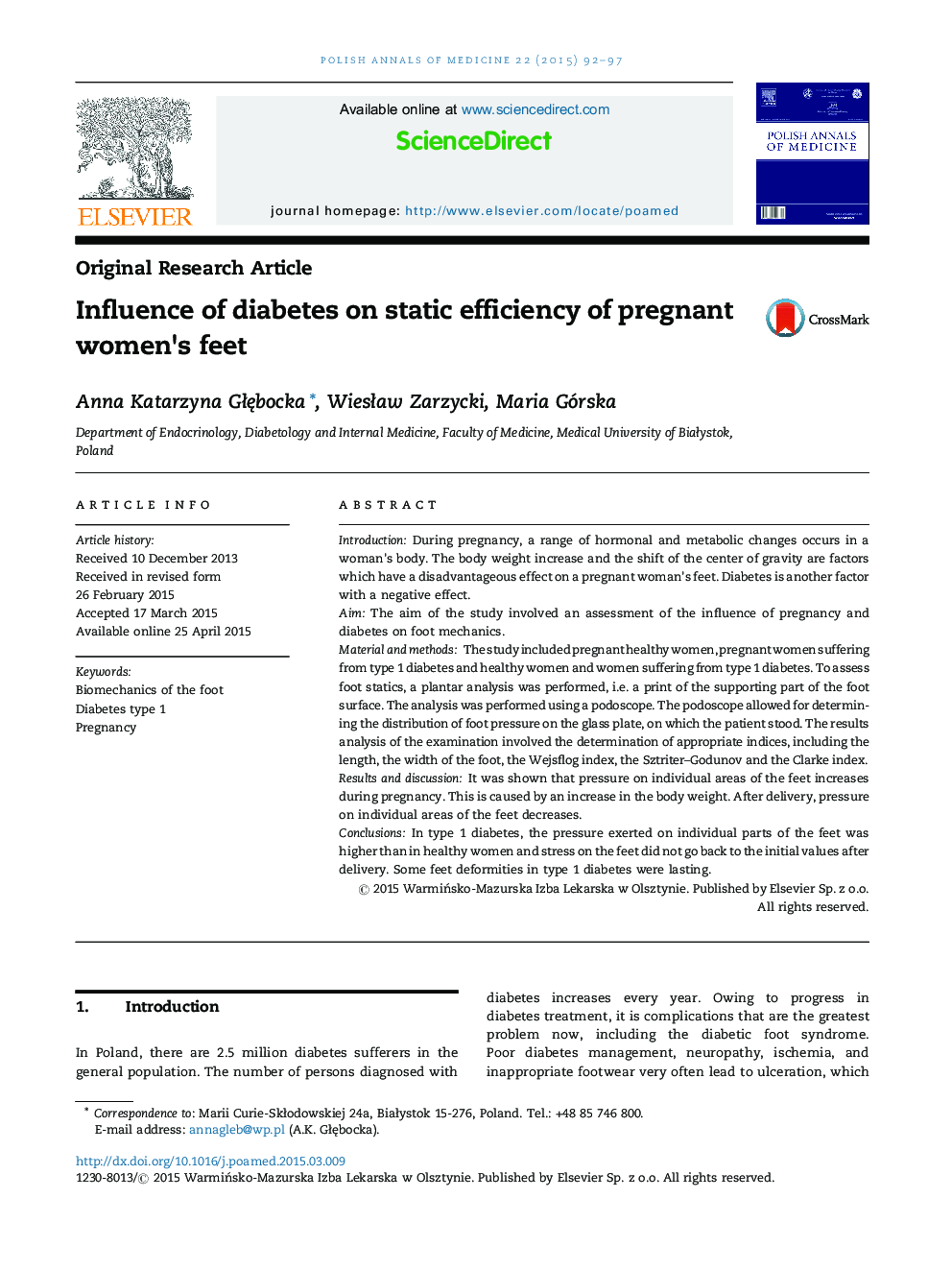| Article ID | Journal | Published Year | Pages | File Type |
|---|---|---|---|---|
| 2680523 | Polish Annals of Medicine | 2015 | 6 Pages |
IntroductionDuring pregnancy, a range of hormonal and metabolic changes occurs in a woman's body. The body weight increase and the shift of the center of gravity are factors which have a disadvantageous effect on a pregnant woman's feet. Diabetes is another factor with a negative effect.AimThe aim of the study involved an assessment of the influence of pregnancy and diabetes on foot mechanics.Material and methodsThe study included pregnant healthy women, pregnant women suffering from type 1 diabetes and healthy women and women suffering from type 1 diabetes. To assess foot statics, a plantar analysis was performed, i.e. a print of the supporting part of the foot surface. The analysis was performed using a podoscope. The podoscope allowed for determining the distribution of foot pressure on the glass plate, on which the patient stood. The results analysis of the examination involved the determination of appropriate indices, including the length, the width of the foot, the Wejsflog index, the Sztriter–Godunov and the Clarke index.Results and discussionIt was shown that pressure on individual areas of the feet increases during pregnancy. This is caused by an increase in the body weight. After delivery, pressure on individual areas of the feet decreases.ConclusionsIn type 1 diabetes, the pressure exerted on individual parts of the feet was higher than in healthy women and stress on the feet did not go back to the initial values after delivery. Some feet deformities in type 1 diabetes were lasting.
